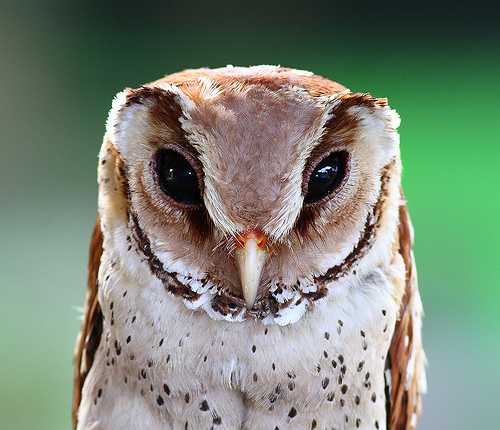Description:
Bay owls appear similar to other barn owls; they are generally smaller, have ear-like feather tufts, and have a more divided and U-shaped facial disk. Generally pale buff or light chestnut brown with dark flecks underneath, dark chestnut brown above spotted with black and yellow.
Worldwide Distribution:
Bay owls can be found in central Africa, and from the Indian subcontinent to Southeast Asia and the Indonesian archipelago.
Habitat:
Dense evergreen primary and secondary forest, particularly foothills, sub-montane forest
Roosting during the day in holes and hollows in tree trunks, or perched on a branch sheltered by palm leaves, usually no more than about 2 metres above the forest floor. This owl is not alert when roosting and is easily approached.
Diet:
They hunt from a perch for rodents (such as rats and mice), bats, birds, lizards, frogs, and large insects such as beetles and grasshoppers.
Breeding:
Breeding season is March to May, 3-5 white eggs are laid.
Call:
A typical song is a series of 4-7 or more loud, melancholic fluted whistles, given at about 2 notes per second.




